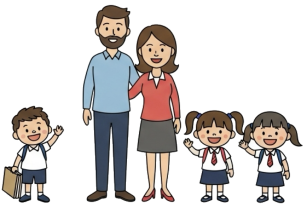
Question More, Action Knowledge.
Remember, at QMAK, we don’t just teach; we empower. We don’t just inform; we inspire. We don’t just question; we act. Become a Gold Member, and let’s unlock your child’s full potential, one question at a time.
Back to Mind Explorers
![]()
This lesson helps children experience the joy and freedom that comes from letting go of intentions and surrendering to the present moment.
By releasing the need to control or change their experience, children learn to find contentment and ease in simply being.
This activity promotes a sense of playfulness, spontaneity, and deep relaxation, as children discover the joy of embracing life as it unfolds.
It also helps children develop a more flexible and adaptable mindset, as they learn to navigate the paradoxes and absurdities of life with humor and grace.
Hey there, young adventurer!
Today, we're going on a special journey called "The Intentionless Adventure."
We're going to explore what it's like to let go of all our intentions and just be in the moment.
It might sound a bit silly or even impossible, but that's part of the fun!
We'll see how it feels to not try to control or change anything, and simply enjoy what's happening right now.
Are you ready to give it a try?
1. Have the child sit comfortably and take a few deep breaths.
2. Ask the child to imagine what it would be like to have no intention at all. Encourage them to let go of any goals, plans, or desires they might have, even if it feels a bit strange or funny.

3. If the child expresses confusion or says that the intention of having no intention is still an intention, acknowledge the paradox and encourage them to embrace the absurdity of it. Laugh together and invite them to just go with the flow.
4. Encourage the child to notice how it feels to not try to control or change their experience in any way. Ask them to simply observe and enjoy whatever is happening in the present moment, without judgment or expectation.

5. See how long the child can go without having any intention, except for the intention of having no intention. If they find themselves slipping back into old habits of planning or controlling, gently remind them to let go and return to the present moment.
6. After a few minutes, ask the child to share their experience and any insights they gained from the exercise.

To further explore the concept of letting go and finding joy in the present moment, consider introducing your child to the book “Now” by Antoinette Portis.
Synopsis: A girl celebrates the present with lines like, “This is my favorite hole because it’s the one I’m digging,” illustrating playful acceptance of the here-and-now.
Connection: Embodies the lesson’s theme of releasing control and finding joy in spontaneity
Verse 1:
No plans, no goals, no wishes today
Just letting go and finding our way
It might seem strange, it might feel weird
But that’s okay, there’s nothing to fear
Pre-Chorus:
Intentions gone, what do we find?
A world of wonder, left behind
The present moment, crisp and clear
When we just let it all appear
Chorus:
Let it be, let it flow
No need to push, no need to know
This intentionless adventure
Shows us life beyond measure
Verse 2:
Laugh at the silliness, embrace the fun
Of trying so hard to not get things done
Just watch and wait, see what unfolds
When you let go of all you hold
(Pre-Chorus)
(Chorus)
Bridge:
It’s a paradox, a puzzling game
To intend no intention, isn’t it strange?
But in this moment, wild and free
We find the joy of simply being
(Chorus)
Outro:
Open your eyes, take a look around
What freedom and peace you have found
In letting go, in letting be
You’ve set your spirit truly free

Remember, at QMAK, we don’t just teach; we empower. We don’t just inform; we inspire. We don’t just question; we act. Become a Gold Member, and let’s unlock your child’s full potential, one question at a time.